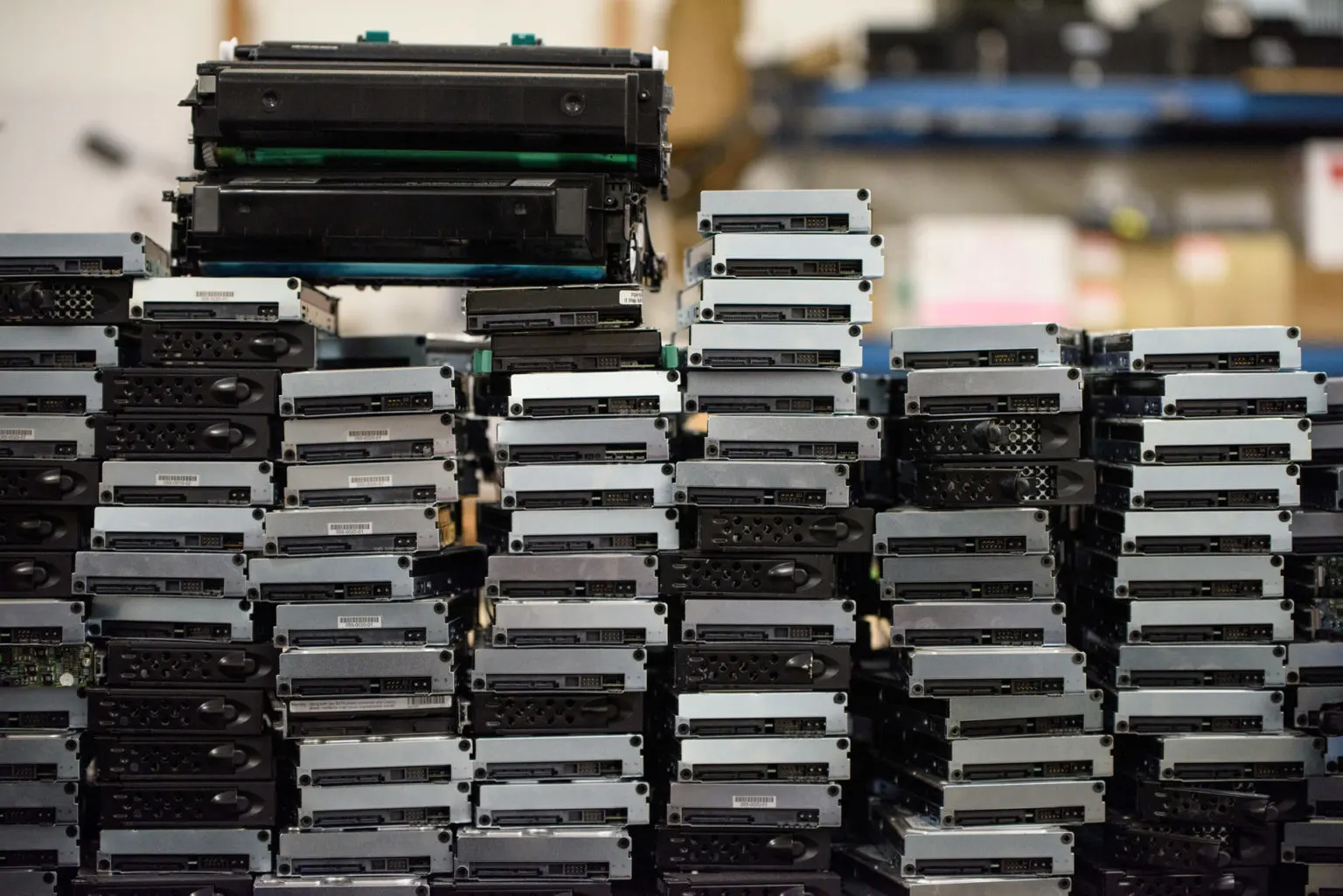While technology has evolved and provides multiple platforms for keeping data, maintaining data integrity has become a common concern. Large organizations with sensitive information and crucial customer data need to be careful and employ secure ways to operate on the data. It is crucial because of recent scandals involving social media, hacking, and data access from anything from online shops to banks.
Businesses must also upgrade, change or recycle their retired IT equipment and organize their assets. The stored data must be taken care of during hardware disposal processes, whether personal or internal business data.
Issues with Improper IT Equipment Disposal and Recycling
There are several stages for recycling IT equipment, including testing, tracking, remarketing, final disposition, and recycling. The issue of not following a proper ITAD plan is that data might still be present in the storage devices. When IT assets are collected for disposal, the data is often overlooked and may not be completely deleted.
There have been instances where precautions were not implemented, resulting in e-waste dumps at risky locations. It raises environmental concerns and puts the data in these devices at risk. There are several reasons why businesses suffer from data integrity during disposals. One is the lack of knowledge and planning required for a secure process.
The IT assets are first evaluated, and the data is erased or shifted to a secure location. The parts are separated, and the valuables are sent to recyclers for further processing. Organizations now look for experts who can help them perform proper IT asset disposals, maintaining data integrity.

Ways to Destroy Data during IT Asset Disposal
Once you have identified the equipment that needs to be disposed of, you must determine what to do with the data in those devices. If the data is no longer required in your operations, you can delete/discard it. To keep the data, you must back it up and store it safely. There are also methods for data restoration if you accidentally delete any information needed.
Several “sanitization” techniques permanently delete/erase data from a device. Your company must choose the right sanitization method for the specific device, as they vary depending on the device under consideration.
- -Data Deletion: permanent data deletion from a device permanently takes several steps. After you delete the data, it might still be present in the media, although it will appear to have been removed. Proper data deletion or erasure becomes essential because expert hackers can exploit the data from your disposed devices. A good ITAD vendor will help clean your devices properly so that no crucial data is left in the open.
- -Overwriting: One of the ways of erasing data is by replacing it with new binary data. This data has random data patterns making it difficult for hackers to decipher the original information. To prevent attackers from accessing the original data, users should completely erase the hard disc and add numerous layers of new data (three to seven passes of new binary data. This way of sanitization should only be applied after evaluating the device and its data thoroughly.
- -Physical Destruction: Physically destroying the device is the most effective way to protect your information from outsiders. Devices can be burned, melted, dissolved, etc., to destroy their parts completely. Although it ensures data safety, destroying all your devices may not be suitable. Some devices might be recycled, upgraded, or reused for better sustainability. Hence the ITAD vendor can guide you on what data erasure method you should use.
Maintaining Data Security
While performing something you are accustomed to, you might skip the tiny details and make mistakes. In the case of IT asset management, such mistakes can cause data to deteriorate. If the crucial information wasn’t backed up and improperly erased, it might be vulnerable as it can be open to the public.
To keep your data secure, you may need to take extra precautions daily, hold weekly data security audits or reviews, or be more cautious when entering and storing data to prevent problems later. When conducting the ITAD process, double-check the devices to ensure no data is left for the public.

Security Standards and ITAD Policy
When a company wants to dispose of retired IT equipment, it must start with a plan and consider the policies. Some of the most common standards to follow include the following:>
- -National Association for Information Destruction (NAID) AAA Certification – Global – sets standards and regulates the secure data deletion sector.
- -Transported asset protection association (TAPA) – North America – Freight security requirements standard.
- -Assured Service (Sanitisation) scheme (CAS-S) – United Kingdom – NCSC offers this program for businesses looking to sanitize extremely sensitive government data for owners.
- -Information Security Management System (ISO 27001) – Global – Concerns about the recycling of used electrical and electronic equipment and asset management involving secure data deletion.
Besides the standard policies, the company must determine the organizational policies regarding data security and asset disposal to ensure a seamless and secure process. Companies often lack the knowledge and plan for proper ITAD, which might hinder their business operations. Hence, to save time and effort, a good idea is to hire a certified ITAD vendor who can assist you through each step of IT equipment disposal and find the right way to erase data from those devices.
The ITAD services market has grown as more companies want to employ the recent technological advancements in their system while efficiently disposing of old/retired devices. Certified ITAD vendors help these companies devise a proper plan for the process and conduct each step carefully to avoid any mistakes.
Making sure that your active data operations are safe and how you dispose of your outdated technology is one of the finest strategies to ensure data security over the long run. Baytech Recovery ensures secure data erasure from devices and provides IT asset management and disposal for organizations that want to deploy new equipment. Our professional services involve taking care of the ITAD process and creating thorough reports with aligned parts of the process.
Have any questions regarding the topic “Why Maintaining Data Security Essential When Disposing of Company Hardware?” feel free to comment below.
Also Read: Data Security Best Practices for Businesses
